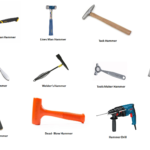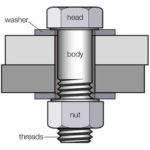Look around, and you see concrete. The walls of your house, floor, driveway, and the road, they are all made of concrete. The industry has come a long way since Joseph Aspdin invented what is now known as Portland cement, back in 1824.
However, even if cement is one of the hardest construction materials known to man, it is not invulnerable. You may still need professional concrete repair services at least once in your lifetime.
The cement industry in the United States was worth around $49 billion in 2018, with a compound annual growth rate of around 4.9%. It is one of the primary drivers of the country’s economy, with around 280,000 workers dependent on the industry. In terms of production, the US rolls out around 120 million tons per year.

But when do you need concrete repair? Below are the signs to look out for:
1. Cracks –
This is the most common sign of damaged concrete. There are multiple reasons for these. It could be due to the soil movement underneath the cement as a result of the weather conditions. It could be a water leak or exposure to the elements. Some of the cracks may not need repair. A hairline crack is not indicative of the actual damage. The only way to know for sure is to bring in a professional, especially if you see cracks on your walls.
Also Read:
16 Types of Cement used in Construction Work
2. Sinking surfaces –
Sunken surfaces on the floors and walls are a sign of significant damage. Sometimes, you will first notice that the surface of your floor looks uneven. Substandard output can be one of the reasons for this. Most homeowners may ignore the problem up until the floors cave in. But you should never compromise the safety of the occupants in your effort to save money.
3. Water pooling –
If you see a pool of water on the surface of your floor, it could be a sign of a water leak underneath. The leak may be a result of burst pipes or flood seeping through your basement. You only have to look at your water bill to determine if you have a wayward leak somewhere. Water will also stagnate due to improper drainage. If so, you need to resolve the root of the problem first before repairing it.
4. Crumbling and aging –
Crumbling walls are easy to spot, and they almost always indicate structural damage. However, there are some subtle signs that your floors and walls need to be reinforced. When you see the concrete looking old, with streaks of brown or dark stains, you need professional advice immediately. Also, before buying an old house, you need to bring a contractor with you to assess whether or not the building is structurally sound.
To extend the lifespan of the concrete, you need to look out for the red flags. When you manage to fix the problem before it gets worse, it will also result in savings. You can probably perform some of the facelifts yourself. However, it is strongly recommended to bring in a contractor to make a thorough assessment. You never know if the damage is skin-deep or not.








